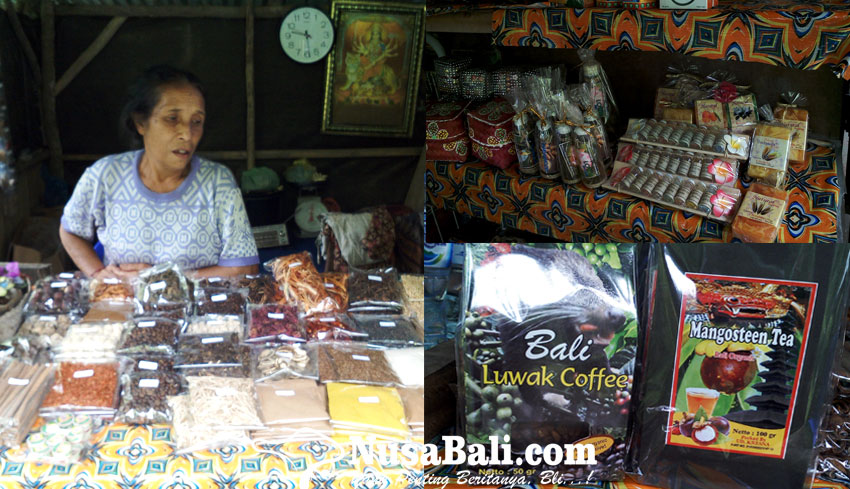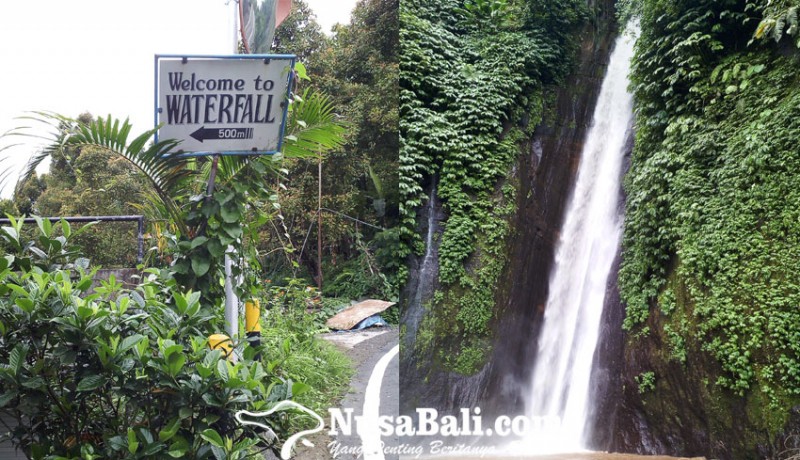Munduk Waterfall: A Journey into Wilderness Beauty, A Journey into History
Munduk, a village in Banjar sub-district, Buleleng regency, hides a lot of surprises for a size of a village. This area has been known as the producer of clove for years, but its mountain view becomes the main beauty for its charm. Despite the fact that not many domestic people are familiar with this area, this place is quite popular for foreigner tourists, not only because of its mountain view, but also because of the waterfall which becomes the main attraction.
SINGARAJA, NusaBali.com
Although the location of the waterfall itself is quite hidden by nature, the development of this site as a tourism destination had been started back during the colonialism era. According to Putu Ardana, the former chief of the village as well as the manager of the tourism destinations in Munduk, back in the colonialism era this site was already known for its beauty, and for that reason in 1920 some home stays were made by the Dutch as a place for relaxation. After the colonialism, this place was made popular again by the visit of Rabindranath Tagore, an artist, a poet, as well as the winner of the first Asian Nobel in literature in 1927. The visit gave the big impact to the locals that they start to realize that this place is potential in tourism sector. But the real development, unfortunately, was started long after that in the end in the 1970s when the locals made a road to access the waterfall.
Hidden in the wilderness, the journey to find the waterfall starts with a walk following a footpath away from the main road. The locals who live near this site have been using motorbike to ease the access to the main road, but the tourists have to walk about five hundred meters by foot to reach this site. In spite of the cold temperature in the mountain area, the walk to the waterfall might make the tourist all sweaty but once they arrive to the site it will be paid off. The view of the waterfall which seems to give peaceful feeling is worth the journey.
The waterfall itself is about 40 meters tall with vines and wild plants grow covering the earth wall around the waterfall, making it looks as if it is hiding the waterfall from the world outside. The streams are flowing down and divided into two direction streams, which is united again as a river after they flow down and leave a wide area which is enough for the tourists to have a closer look to the waterfall. This wide area and the footpath are connected by a bridge made from bamboos. Besides, some water spoils through the earth wall and joins the streams, while some of the water makes its own flow. To honor this place, the local had made some sacred points, marked by a small temple, big stone in the middle of the river, and a big tree covered with a black gingham cloth. But don’t worry, the tourist are safe to enjoy this site as long as they do not do some disagreeable things.
Besides enjoying the walk to the waterfall, in the middle of the way there is also a small stall selling Balinese herbs, spices, and essential aromatherapy oils. This attracts the tourists’ attention since Indonesia was well known for its spices as the secret of its culinary wonder. Most of the herbs and spices are sold dried and powdered, making it last longer than its original form. The price was ranged from IDR 30,000,00, to IDR. 50,000,00, for each package of spices, and some are packaged containing all the spices and sold for IDR 75,000,00.

Before entering the gate to the waterfall, the tourists have to buy a ticket for adult for IDR 20,000,00 and here is the good news: the children are free from charge, which make the trip to the waterfall is pretty cheap for a family with kids. Most of the tourists come to this place at ten in the morning, but I recommend you to come early around 8 or 9 o’clock in the morning. The place will be quiet and you are free to take pictures without any distracting view of crowd blocking the background of your pictures.
The best time to visit this place is around May to October, when there will be no rain which makes the water as clear as the crystal. That period is also the same time when the foreigners usually got their summer holiday around June to August. But if you insist on coming during the rain season, be prepared for the water that changes into brownish color and the footpath will not be easy to walk on.
But don’t worry! Even when you are not able to visit the waterfall due to the unstable weather at the end of the year, the mountain views from the rows of home stays are pretty impressive themselves. You can enjoy a nice cup of Banyuatis coffee while enjoying the sight of the mountain valleys and the smells of dried cloves or listening to bugs orchestra during the quiet evening. *yul






Komentar